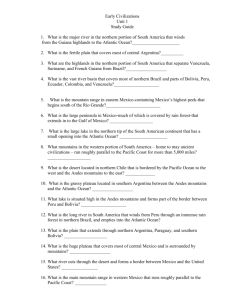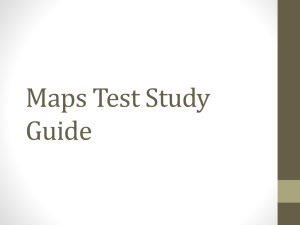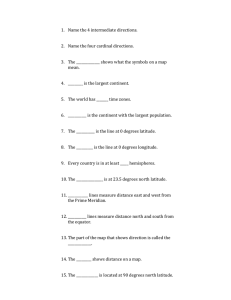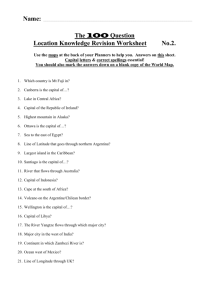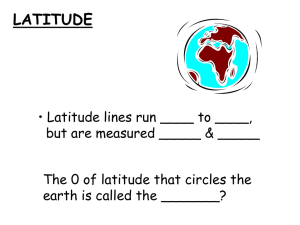Map and Geography Review - Timber Ridge Elementary
advertisement
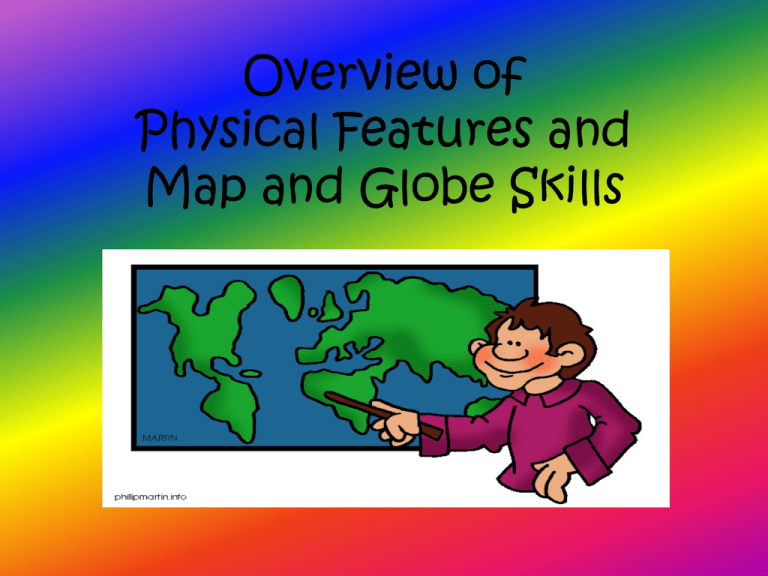
Overview of Physical Features and Map and Globe Skills Death Valley • The lowest, driest, and hottest valley in the United States. Atlantic Coastal Plain • The flat stretch of land that borders the Atlantic Ocean in the eastern United States. Continental Divide • The north-south line that divides the flow of water (watersheds) between the Pacific Ocean and the Atlantic Ocean. Great Basin • The largest U.S. desert that has no natural outlet to a sea or ocean. Water within it evaporates since outward flow is blocked. Gulf of Mexico • The oval shaped body of water located to the west of Florida. Great Plains • A vast grassland region of central North America east of the Rocky Mountains and extending into Canada. Much of the area is used for cattle and wheat ranching. St. Lawrence River • The large waterway connecting the Great Lakes to the Atlantic Ocean. Rocky Mountains A major mountain system of western North America extending from northwest Alaska to the state of New Mexico. Also forms the Continental Divide. Appalachian Mountains • A mountain system of eastern North America extending from Newfoundland to central Alabama. Rio Grande • a North American river that boundaries the United States and Mexico and flows into the Gulf of Mexico. Great Lakes • The large freshwater bodies of water on the Canada – United States border. Huron Ontario Michigan Erie Superior Mississippi River • The chief river of the United States, extending from northern Minnesota to the Gulf of Mexico. Colorado River • The Colorado River is the primary river of the American Southwest, extending from Wyoming through Nevada and California. Ohio River • a river that is formed in western Pennsylvania and flows westward to become a tributary (a minor river or stream which flows into a bigger one) of the Mississippi River Hudson River • river that flows from north to south through eastern New York. Globe • A model of the earth. Atlas • A book of maps and other information about people, places and events. Physical Map A map that illustrates features of an area such as rivers, lakes, or mountains. Political Map • A map that indicates how boundaries, capital and major cities are divided. Hemispheres • Half of the globe divided into northern and southern hemispheres by the equator or into eastern and western hemispheres by the prime meridian. Lines of Latitude • Lines that run east to west (horizontally) on a map or globe that help indicate position. Equator • The line that divides the earth into two halves and runs east to west at zero degrees latitude. Lines of Longitude • Lines that run north to south (vertically) on a map or globe that help indicate position. Prime Meridian • The line that divides the earth into two halves and runs from the North Pole to the South Pole at zero degrees longitude. Grid Map • A map that has squares marked by letters and numbers along the top, bottom and sides that cross each other to help you locate places easily Coordinates • The latitude and longitude address of a place. Cardinal Directions • • • • North (never) East (eat) South (soggy) West (waffles) Intermediate Directions • • • • Northeast Southeast Northwest Southwest Map Scale The miniature ruler on a map that shows relative distance. Map Legend • Explains what symbols on a map represent.

